Memorial Tribute to David Koloane
Claudia Braude, Saturday 3 August 2019, South African National Gallery
I met David in 2016, at the Turbine Art Fair. I approached him and asked him if he would be interested to be in a conversation with me about the new initiative I was putting together in Muizenberg, which has since turned into Gallery South.
David was incredibly gracious and generous and gentle, and made time for me. Every time I went up to Joburg, I would go and visit David and Monica in their home in Parktown, this flat nestling just on the tip of Hillbrow surrounded by all these buildings we recognise from David’s imagery.
And I visited David at the Bag Factory in his studio, where I saw these extraordinary pieces, including these tiny little sketches from his sketch books which were just lying around.
At the time I wasn’t aware there was a Retrospective coming up.
And I said to David, ‘why don’t we put some of these together and curate this?’ And we stood in the Bag Factory pulling pieces out.
Some of the young artists at the Bag Factory had never seen the work, and had never seen it curated in any way to tell a story. David was looking at this, and in his very gentle and warm way, smiling, and was obviously touched.
And he agreed to work with me, which for me has been very influential and very important.
So I am starting at the end. The end of David’s life. The end of his career.
And I am going to invite you in the next few minutes to go and look at the final four pieces hanging in this room, dated this year, dated 2019; two called Abstract Compositions 3 and 4, one called Dancers, and one called Anatomy. Just the four lining these walls which I think are absolutely extraordinary pieces.
For me to appreciate just how extraordinary they are has involved a dialogue over the last couple of years, particularly the last few months with the artist Jill Trappler, and also with Dr Mongane Wally Serote, our poet laureate.
When I understood from David that he had worked with Bra Wally in 1982 in Botswana at that famous conference and since then, I understood that there was a very important conversation between Bra Wally and Bra David, and I invited Bra Wally to come and open the exhibition in February, which he equally graciously accepted to do; and we had this extraordinary moment talking about David’s work, talking about the significance of that era.
And the key issue, the dialogue that Jill and I and Wally have had, was about what is abstract art? What is the significance of abstraction in the trajectory of South African art history, when so much of our work and our emphasis is on figurative, and often on struggle work, struggle art? What is the significance of an artist who produced abstract expressionist work?
To understand the significance one has to understand the significance of David’s history with Bill Ainslie at the Johannesburg Art Foundation, where Bill Ainslie was obviously a major proponent of abstraction. And as I understand it increasingly, also out of conversation with Jill (and by the way, Jill talks about David dropping clues and whispers – Jill is the master of dropping clues and whispers and deserves to be listened to in great detail and consulted in great detail), one of the clues Jill dropped was – something in fact here, during the walkabout at the opening of David’s exhibition – at the Joburg Art Foundation one of the things they read was Hans Hoffman, the German abstract expressionist who was so influential in New York.
And to read anything about Hans Hoffman is to understand a crucial thing: that he fled Nazi Germany, he left Germany in 1932; and protected the inner world of the artist in part through this emphasis on abstraction. That when you are faced with such extremes in narrative, in political systems, one thing you need to do is to protect the inner world of the individual and necessarily of the artist.
That’s on the one hand. That’s not an unpolitical, apolitical statement. It’s a statement about the need in a political system to protect what is important in a person’s life.
But then on the other hand you have the artist Thami Mnyele who left South Africa in 1978 and whose great emphasis was on figurative struggle work and on artists as cultural workers.
So you have these binaries which we know in the history of South African art, the perception that abstraction is unpolitical and not related to social change, and then struggle work which is about social change.
And David’s life and David’s work destroys that binary.
David on the one hand was totally committed to abstract expressionism. On the other hand, he was equally comfortable creating and curating in 1982 in that art culture and resistance conference in Gaborone the exhibition called ‘Art and Social Development’. For him there was no difference between abstract expression and social development.
And former president Thabo Mbeki, at the funeral in Johannesburg recently described David as a very loyal fighter for the liberation of our people. And I don’t think that is how we are used to thinking about David, but here is our former president saying, I have come here today to memorialise this man and focus on his role as a freedom fighter.
I invite you to have a look at what liberation means. What was David fighting for?
I think you can see it in these phenomenal pieces.
Bear in mind that David was in his last few months of life, a man who had come through chemotherapy for lung cancer, was struggling to breathe, was physically very frail, any of us who knew him in that time – Monica we thank you for having cared for him and looked after him in that time – are amazed that he could produce this work.
He didn’t go to the Bag Factory, he sat in his home in Parktown, in his garage, in the cold. Monica was describing to me this morning, saying to him, ‘why are you working in the cold, this is not good for you’.
Go and look at those works, go and look at the luminosity, the spirituality, the celebration of life, and picture this man, frail, doing these layers of art, of paint, of media, and the movement, the rhythm, the physical energy that is on that canvas. He takes out of the bottom layer of the canvases, which are darker, he produces almost out of this tohu vavohu, this void and this chaos, through layering with colour, with texture, he creates, sometimes you can see these dancers, these figures of dancers, dancing figures.
I sort of imagine this man who knew that his time was coming to an end, what were the images, what were the figures he was imagining in his head?
These are figures who have walked this world before. These are ancestors. These are people he knew before. These are people who are ushering him past where we are now.
To stand – I’m sorry if I get tearful in this, and I felt this at the opening last month – to stand in front of those images, I kept having cold shivers because what you are feeling there is this man who wasn’t just a great artist and a great South African, who overcame such enormous hardship to have that inner freedom to produce what he needed to produce, his inner truth. That is human greatness. When you stand in front of those paintings, you are seeing the jazz of the spirit. You are seeing this man who could dance, who could sing, who could soar even while his body was exiting.
So I feel very touched to be here. Thank, you Jill for inviting me to speak in this. Thank you Pat and Bongi, for sharing this, and for coming to Muizenberg to be part of this, and to Monica and Lebohang, and to the South African National Gallery and everyone who has been part of this.
But what I have been touched by in these years is a great South African artist and a great human being.
Thank you.
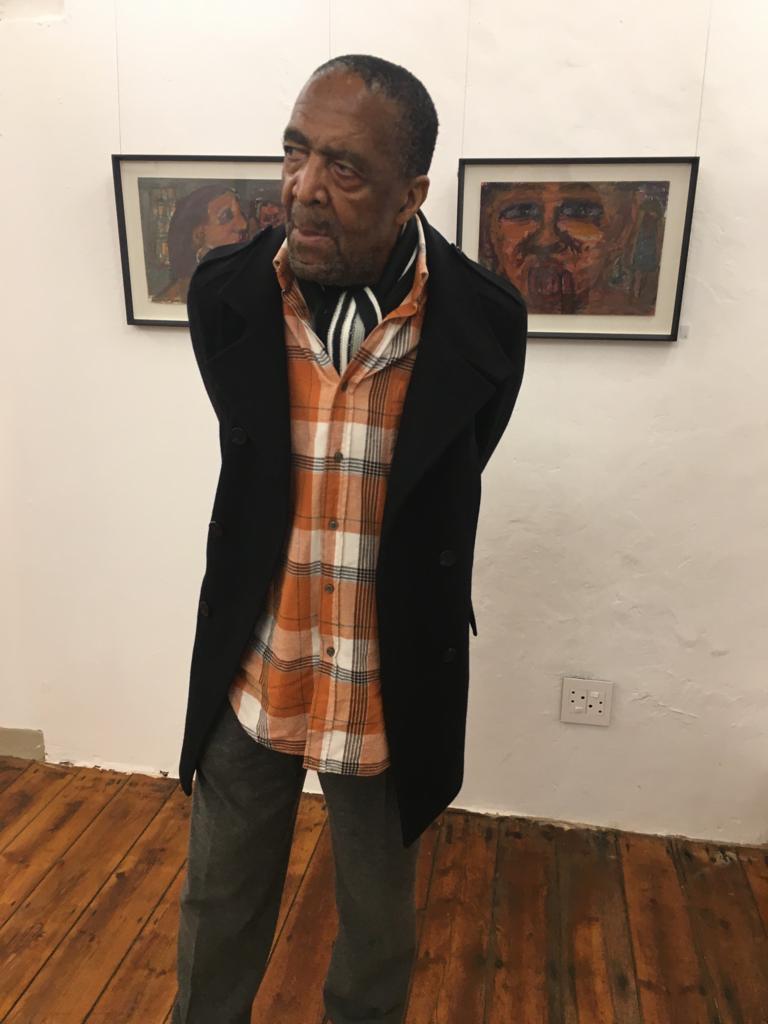
David Koloane viewing his works at Gallery South, June 2019
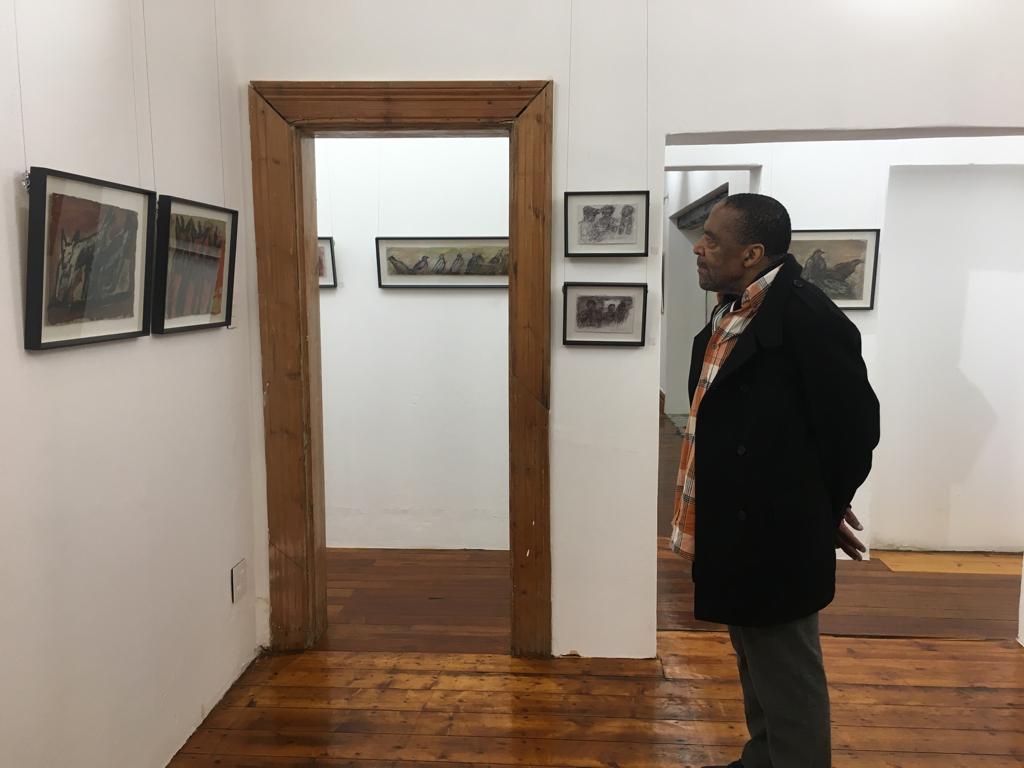
David Koloane viewing his works at Gallery South, June 2019

David and Monica Koloane, Gallery South, June 2019. The works of Lindo Zwane, mentored by David in 2016, in preparation for installation.

David Koloane at the Bag Factory, 3 May 2017, looking at works from his studio selected by Claudia Braude
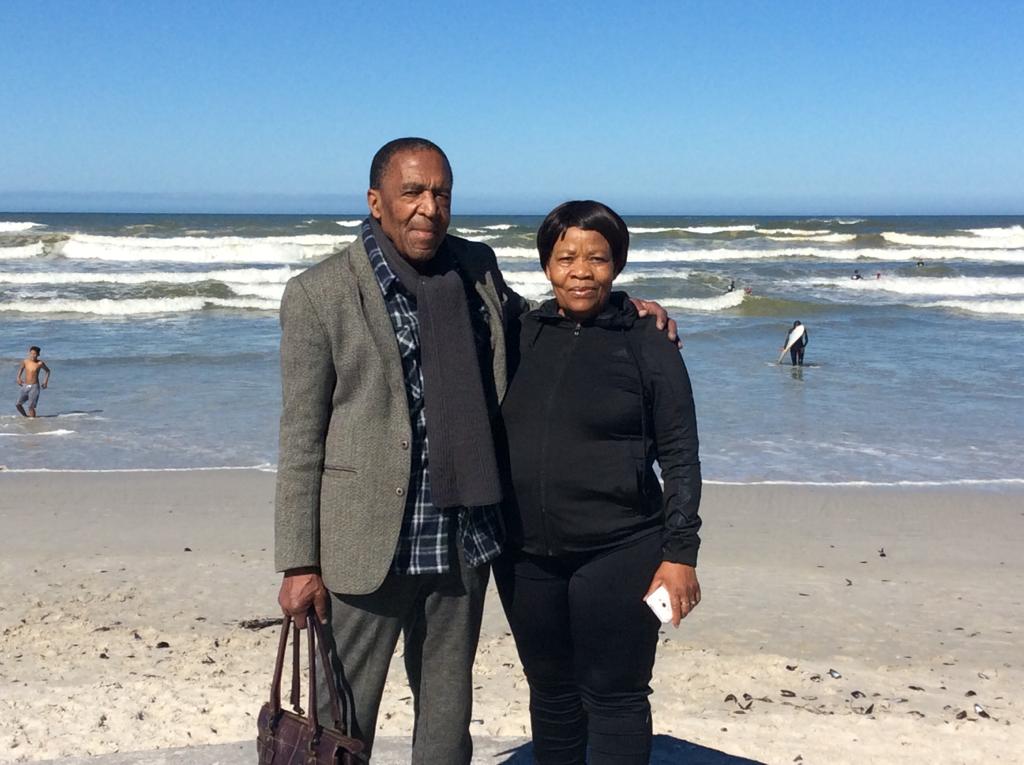
David and Monica Koloane, Muizenberg, July 2016, looking at works from his studio selected by Claudia Braude
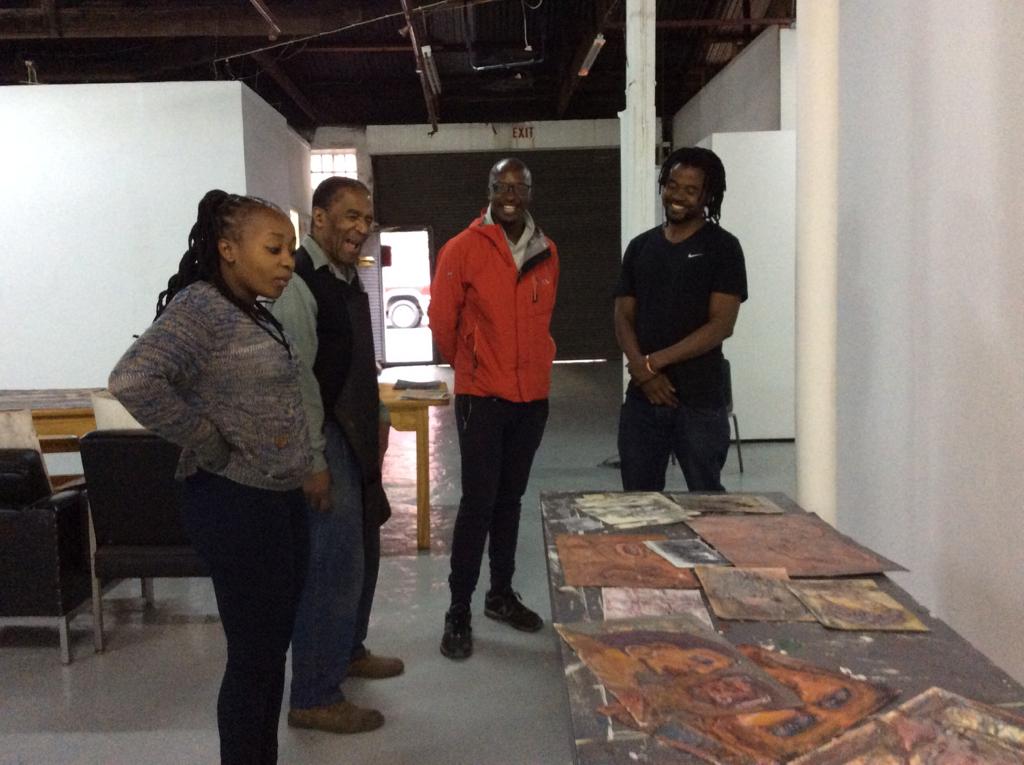
David Koloane at the Bag Factory, 3 May 2017, looking at works from his studio selected by Claudia Braude
Listen to Tribute to David Koloane
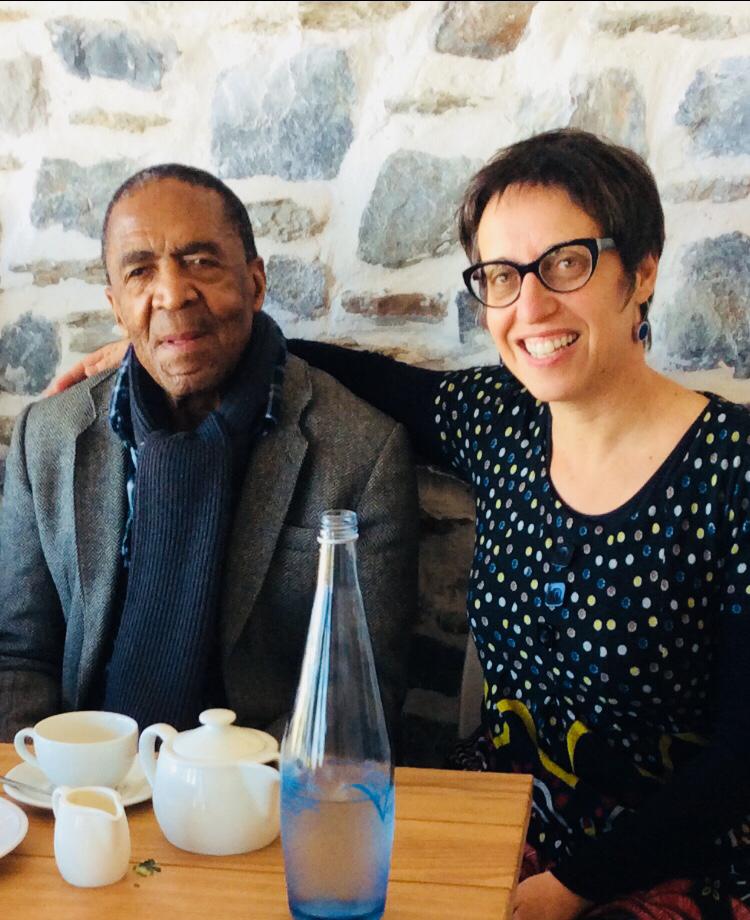
David Koloane and Claudia Braude, Muizenberg, July 2016
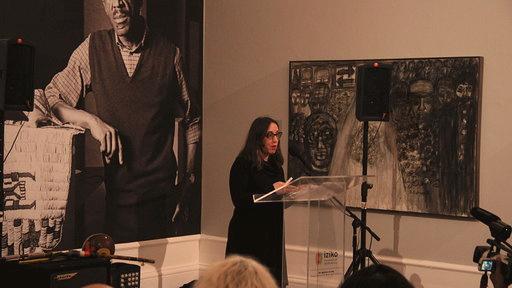
Memorial tribute to David Koloane, South African National Gallery, 3 August 2019
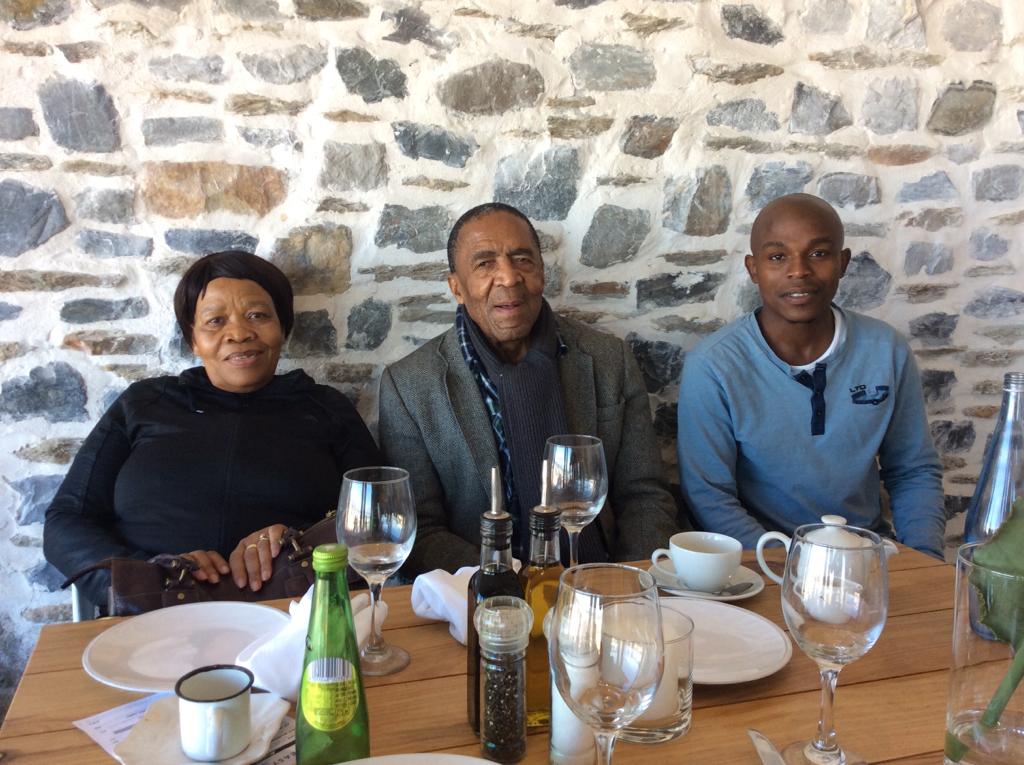
Monica and David Koloane and Jack Thamage, Muizenberg, July 2016
